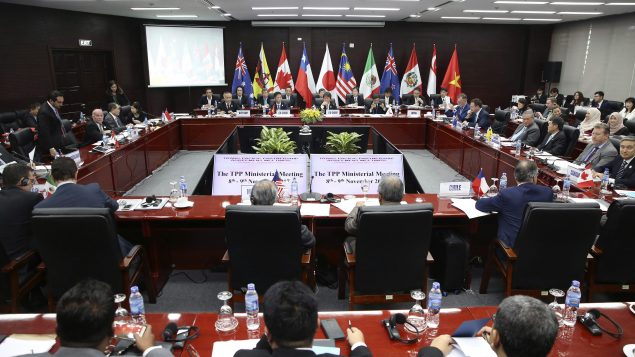International Trade Minister François-Philippe Champagne is leaving for South America on Thursday to put Canada’s signature on a revised 11-country free trade deal that will create one of the largest trading blocks in the world, as well as for talks to join the Mercosur customs union.
The original 12-member Trans-Pacific Partnership (TPP) deal was thrown into limbo early last year when U.S. President Donald Trump withdrew from the agreement to prioritize protecting American jobs.
However, the remaining 11 member countries – Australia, Brunei, Canada, Chile, Japan, Malaysia, Mexico, New Zealand, Peru, Singapore and Vietnam – led by Japan, finalized a revised trade pact in January, called the Comprehensive and Progressive Agreement for Trans-Pacific Partnership (CPTPP).
Ministers from all 11 countries, which together represent 495 million people and have a combined GDP of $13.5 trillion, or 13 per cent of global GDP, will officially sign the CPTPP at a ceremony in Santiago, Chile, on March 8.
“With the CPTPP, Canadian workers, producers, farmers, entrepreneurs and businesses will add another half a billion consumers for the quality products and services Canada can provide,” Champagne said in a statement.

Trade ministers and delegates from the remaining members of the Trans Pacific Partnership (TPP) attend the TPP ministerial meeting on the sidelines of the Asia-Pacific Economic Cooperation (APEC) leaders summit Thursday, Nov. 9, 2017 in Danang, Vietnam. (Na Son Nguyen, Pool/AP Photo)
According to Global Affairs Canada, Canada’s bilateral trade in goods with the 10 other CPTPP countries amounted to $105 billion in 2016.
An economic analysis released by the Canadian government in February said the pact would provide exporters with tariff savings of $428 million per year.
Total Canadian exports to other CPTPP countries are projected to increase by $2.7 billion, or 4.2 per cent, by 2040, compared to gains of $1.5 billion under the original TPP.
‘A bad precedent’
Sujata Dey, Trade Campaigner for the Council of Canadians, a civic advocacy group critical of Canada’s free trade agreements, said she finds it disturbing that the Trudeau government is going “head first into signing the Harper era CPTPP.”
“With very little changes, it is basically the TPP with two new letters,” Dey said. “It erodes the system that supports farmers’ livelihoods. It sets a bad precedent for achieving anything close to progressive trade in our NAFTA negotiations and the other slew of negotiations.”
Wooing Mercosur
Following the CPTPP signing, Champagne will travel to Asunción, Paraguay, on March 9 to meet with his counterparts from Argentina, Brazil, Paraguay and Uruguay.
These countries make up the Mercosur customs union established in 1991. With 260 million consumers and a GDP of over $3 trillion, Mercosur is the world’s fourth-largest trading bloc and Canada has been in exploratory talks with the quartet to join the free trade deal.
“Canada is seizing every opportunity to secure new markets on better terms for more Canadians and is quickly becoming a country with unparalleled access to the world’s most dynamic markets,” Champagne said in a statement. “That is good for jobs and for every Canadian’s longer-term prosperity.”
The Council of Canadians is worried, however, that with Mercosur, the Liberal government is again rushing into another corporate agreement, without a debate on the needs and wishes of the public, Dey said.
With files from Reuters







For reasons beyond our control, and for an undetermined period of time, our comment section is now closed. However, our social networks remain open to your contributions.